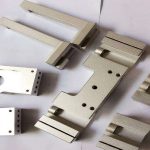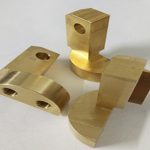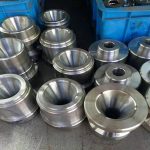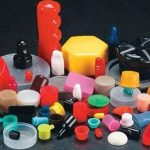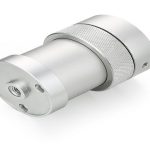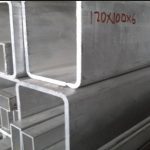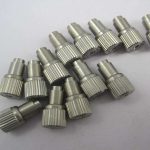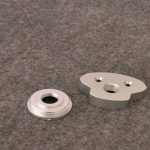Introduction: The automobile industry is an important pillar industry in my country, and it occupies a place that cannot be ignored in the entire processing and manufacturing industry. Bearings can be seen from multiple parts on the car body, which have the special mission of bearing load, reducing friction, and guiding moving parts.
With the continuous progress of my country’s economic development and industrial technology, China has become a major bearing producer including automotive bearing steel. However, there is still a big gap with first-class manufacturers such as Schaeffler of Germany, SKF of Sweden, TIMKEN of the United States, and KOYO of Japan. As the source, the direction of future efforts is still to strictly control the metallurgical quality, the level of non-metallic inclusions, the size and distribution of carbides, and to improve the level of heat treatment technology.
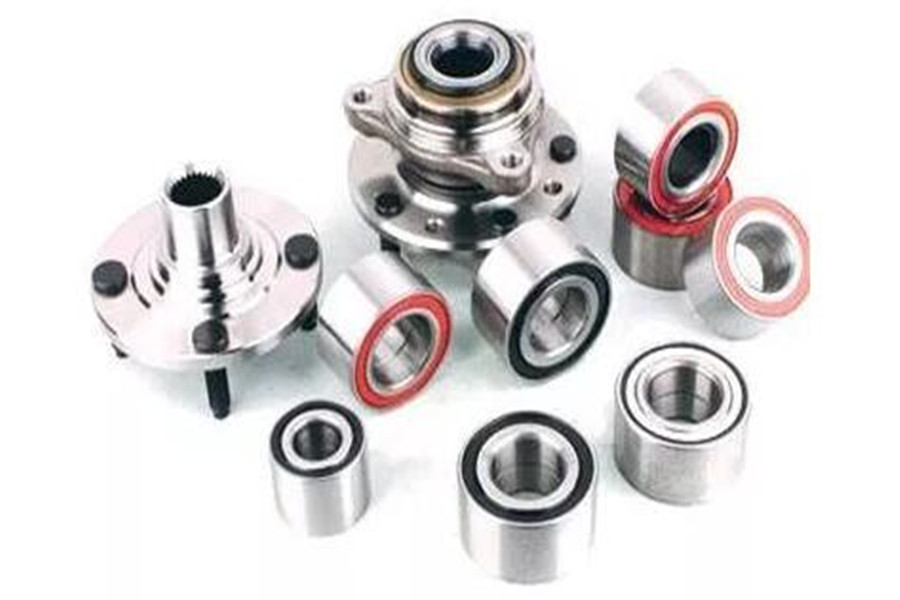
Heat treatment is a key process in the manufacturing process of automotive bearings, and the quality of its processing and raw materials are two important factors that affect the life of the bearing. Heat treatment has an important influence on the microstructure, mechanical properties, surface quality, dimensional accuracy and stability of bearings and other parts under the conditions of use. Therefore, the heat treatment process is optimized, the appropriate heat treatment parameters are selected, and the use status of the workpiece is obtained. The best comprehensive performance compatible with the failure mode is an important subject of heat treatment technology.
1. Application of bearing materials in automobiles
As we all know, the bearing is composed of four parts: outer ring, inner ring, rolling element (ball, cylinder, cone or needle roller, etc.), and cage. Some are equipped with sealing ring. Except for the sealing ring and part of the cage, the rest The manufacturing material is mainly bearing steel.
When selecting the type and model of automotive bearings, it is mainly based on the nature, direction, size, working environment of the actual part of the load, and the requirements on the rigidity, limit speed, life, accuracy and other aspects of the bearing, which is generally completed by the designer. Bearings are widely used in complete vehicles and vary with vehicle types, installation locations and manufacturers, as shown in Figure 1.
The author has visited some important domestic automotive bearing suppliers, such as Shanghai Renben, Zhejiang Wanxiang Precision, Hubei New Torch, Changzhou Guangyang, Luoyang Dongsheng, Chongqing Yangtze River, etc. The following only combines the automotive power system (the alternator in the engine) , Air-conditioning electromagnetic clutch, tensioner and idler bearings), drive system (shaft teeth, differential, clutch and other bearings in the gearbox), hub bearings and other related products are briefly introduced.
(1) Power system bearings
The engine is the heart of the car, continuously providing power to other components. Internal bearings were previously dominated by sliding bearings. At present, most of them use sealed ball bearings on the premise of improving bearing performance. Figure 2 shows several typical bearings in engines.
The alternator bearing is a single-row sealed ball bearing, which is mainly subjected to centripetal force. It is required to operate reliably at a speed of more than 2000r/min and a temperature of greater than 180°C. The rings and rolling elements are made of high-purity GCr15, and the hardness after heat treatment is 58. ~64HRC, the cage generally uses nylon PA46, and the sealing ring generally uses acrylate rubber ACM. The reference standard is JB/T8167—2006.
The air-conditioning compressor electromagnetic clutch bearing is a double-row angular contact ball bearing, the outer ring rotates, the speed of the air-conditioning pulley can reach 7000~13000r/min, the maximum temperature is 160℃, the material is the same as the above, and the cage is partially changed from a common single spherical pocket. Cylindrical surface, the reference standard is JB/T10531-2005.
The tensioner and idler bearings are high-performance sealed ball bearings. The former acts on the loose edge of the synchronous transmission belt, and the latter acts on the tight edge of the synchronous conveyor belt. The material is basically the same as the above. The cage can be made of engineering plastics, or 08 steel or 10 steel. Manufacture, the sealing ring is made of ACM or FPM (fluorine rubber), and the reference standard is JB/T10859—2008.
Water pump shaft bearings are generally double-row ball bearings, and the radial dimension is smaller than that of ordinary bearings. It is essentially a double-supported bearing system with a simplified structure. The two supported bearings do not have inner rings. The raceways of the rolling elements are directly made on the shaft. The outer rings of the two supported bearings are made into a whole. The two sides are sealed with seals. Its rollers are usually made of high-chromium bearing steel, and the material of the shaft and outer ring is made of carburized steel or high-chromium bearing steel. The reference standard is JB/T8563-2010.
(2) Drive system bearings
The typical representative of the transmission system is the gearbox, which can be divided into manual (MT), automatic (AT), continuously variable transmission (CVT), dual clutch (DCT), and it is also the part where the most bearings are used. There are often several bearings in the gearbox to match different gears, the main types are ball bearings, cylindrical roller bearings, tapered roller bearings, needle roller bearings, etc. The gearbox can be regarded as a gearbox, which often contains impurities (iron filings, burrs, sand, etc.) in the lubricating grease and anti-rust oil. The bearing rotates at a high speed during operation, resulting in a greatly shortened service life.
There are also two tapered roller bearings 38D63E17 in the differential, which are respectively located on the left and right sides of the differential case. They are installed on the bearing hole of the reducer case. They bear and transmit the driving force of the differential and the reducer. , Reduce the frictional resistance of the transmission, improve the efficiency and reliability of the transmission.
The rolling elements and inner and outer ring materials of the above bearings are mainly based on GCr15, 100Cr6, SUJ2, and SKF3, using integral quenching + low temperature tempering, heat treatment hardness 60~63HRC (rolling element requirements 60~64HRC), nylon cage material is PA46 +30%GF, the contact seal ring is ACM+SPCC, and the lubricating grease is Chevron SRI-2 (grease injection volume 2.0~2.8g).
The clutch release bearing, commonly known as the clutch pinwheel, is located as shown in Figure 4. When the clutch pedal is stepped on, the pressure plate or drive plate bearing the spring thrust can move toward the clutch cover, that is, the release lever is tilted to overcome the pressure plate spring thrust. To complete the clutch separation work, it is currently mainly dependent on imports. The rolling elements are 100Cr6, the inner and outer ring materials are C67S (the minimum surface hardness is 680HV), the cage is PA66+25%FV, and the seal is made of hydrogenated nitrile rubber HNBR. See standard.
(3) Automobile wheel bearing
With the improvement of the overall performance of automobiles, the requirements for the life, strength, rigidity and maintenance-free of wheel bearings are becoming stricter, and people are increasingly aware of the importance of lightweight, reliability, multi-function and modularity. Towards a highly integrated direction. The automobile wheel bearing unit has developed from the initial ring locking type and cage locking type unit (first generation) to the second generation with flange on the outer ring, and then to the large filling angle press-fitting inner ring. In the third generation of the flange, the sensor with ABS can be integrated with the flange, as shown in Figure 5. They are all double row ball bearings, which are used to withstand greater loads including the entire body. Most of our company’s existing models use the first generation of front wheel hub bearings and the third generation of rear wheels. For example, the inner and outer ring material of a wheel hub bearing of a certain model is SKF3, the steel ball material is SUJ2, the flange material is S55C, the bolt material is SCM435, the cage is nylon PA66+25%GF, and the combined sealing ring is NBR+SPCC/ NBR+SUS430.
2. Automotive bearing material and performance requirements
At present, automobiles are developing towards lightness, comfort, solidity, high power, compact structure, durability, good acceleration performance, and high reliability. In addition, due to the advancement of electronic control technology, automobiles are also developing in the direction of practical performance such as low energy consumption, simplicity and convenience, and strong operability. Therefore, rolling bearings, as an important component for automobile support, must adapt to this trend.
In the process of service of automobile bearings, the unit area of rolling elements and ring surfaces has to bear a lot of pressure, which can be calculated up to 5000N/mm2. In addition to rolling and sliding when the bearing is running, it is subject to high frequency and alternating current. In addition to the contact stress, it is also affected by centrifugal force, as shown in Figure 6. According to literature records, the main failure modes of automobile bearings include peeling, pitting, adhesion, strain, fracture, loss of precision, excessive vibration and noise, etc. Therefore, the performance of bearing steel has the following requirements:
① High purity.
② Low oxygen content.
③High hardness and wear resistance.
④Good dimensional stability.
⑤ Sufficient compressive strength and resistance to deformation.
⑥Good process performance.
Bearing steel is one of the important special steel varieties, and its quality and performance largely reflect the metallurgical level of a country. Automobile bearing steel accounts for about 40% of the annual output of bearing steel, and its consumption is large. The life and reliability of automobile bearings are certainly related to the initial design, manufacturing, lubrication, installation and maintenance, but the raw materials are the key.
It can be seen from the above that, among the several major components of the automobile bearing assembly, except that the cage is changed from the original stamping steel to the popular nylon material (such as injection-molded PA66+30% GF) and the seals are more often rubber materials ( Such as ACM+SPCC, NBR+SUS430), the rolling elements and inner and outer rings of automobile bearings in my country are widely used in this type of high-carbon chromium-containing bearing steel with wC=0.95%~1.05%, wCr=1.40%~1.65%. In order to improve the hardenability to meet the needs of changes in the wall thickness of the parts, a series of high hardenability high-carbon chromium bearing steels can be developed by increasing the content of Mo: for example, 100Cr6 and 100CrMo in Germany, SKF2 and SKF3 in Sweden, 52100.3 and 52100.4 in the United States , Japanese SUJ2, SUJ3, SUJ4, SUJ5, etc., are suitable for martensite quenching, and also suitable for bainite quenching of ultra-thick wall bearing parts. There are slight differences in chemical composition between them, as shown in Table 1. Comparison of the two In fact, these steel grades can be regarded as variants of GCr15.
Although its variety is relatively single, it is also the variety with the most demanding quality requirements among structural steels (gear steel, bearing steel, spring steel, non-quenched and tempered steel, and cold heading steel). What is critical is the need to improve the purity of steel and strictly reduce the content of trace elements such as O, S, Ca, N, and Ti. It is also necessary to control the defects that may be caused in the metallurgical process including smelting, casting, rolling, forging, etc., such as often Smelting processes such as vacuum degassing, electroslag remelting, and out-of-furnace refining are used. It is an indisputable fact in the industry that reducing the oxygen content can significantly extend the fatigue life of the bearing. Figure 7 shows the relationship between the oxygen content and the relative life of the bearing. In the national standard GB/T 18254-2002, the O content of high-carbon chromium bearing steel is clearly stipulated: die-cast steel ≤15ppm, continuous casting steel ≤12ppm. In actual production, with the development of metallurgical equipment and processes, the control is more stringent. , The lowest level can reach 5ppm. In addition, standards or technical agreements have relevant restrictions on smelting methods, non-metallic inclusions, segregation, decarburization, macrostructure, microstructure, carbide inhomogeneity, surface quality, and allowable dimensional tolerances. Steel mills And bearing production enterprises must strictly inspect and manage the steel when entering the factory, and must not be sloppy.
It should be added that, in addition to most of the automotive bearings are rolling bearings, only crankshaft bushes, connecting rod bushes, piston bushings, shock absorber guide seats, gearbox reverse gear bushings, etc. are sliding bearings. They do not involve Heat treatment mainly relies on powder metallurgy sintering + rolling. The material is generally made of steel with wC≤0.15% on the back side (such as 08Al), and the main bearing is an alloy layer (such as Al-Sn20Cu or common tin-based, lead-based, Copper-based or aluminum-based bearing alloys). The heat treatment discussed later is also aimed at automotive rolling bearings.
3. Heat treatment technology of automobile bearing
The main role of the main alloy element chromium in automobile bearing steel is to improve the hardenability of the steel, so that the parts can obtain a more uniform structure on the entire section after quenching and tempering. Chromium can form alloy cementite (Fe, Cr) 3C, refine the austenite grains, reduce the overheating sensitivity of the steel when heated, improve the wear resistance, and make the steel obtain fine needle-like or hidden shapes during quenching. The crystalline martensite increases the toughness of the steel on the basis of high strength. Generally, there is no need for cryogenic treatment of automotive bearings, unless there are special requirements for the dimensional stability of the parts and the content of retained austenite.
(1) Production process route of automobile bearing parts
The general production route of steel ball rolling elements is: bar stock→ball blank hot pier forming→smooth ball (filing)→soft grinding→heat treatment→hard grinding→fine grinding→finishing (polishing).
The general production route of inner and outer ring is: pipe material (cold grinding) → annealing → turning → soft grinding → heat treatment → grinding → finishing.
The general production route of the cage is: solid cage (nylon): blank → turning → pulling and drilling window → surface treatment.
Stamping cage (metal): strip or sheet → forming → bottom cutting → punching window → pressure slope → expansion → surface treatment.
The rolling elements, outer rings, inner rings of automobile bearings, and the second and third generation flanges of wheel hub bearings must be properly heat treated to give full play to the potential of the material itself, obtain the expected performance of the parts and increase the service life of the assembly. Spheroidizing annealing, overall quenching + low temperature tempering, chemical heat treatment, induction heat treatment and other methods.
(2) General situation of heat treatment of automobile key bearing parts
The following is a brief introduction from heat treatment equipment, process examples, technical requirements, and development forecasts.
The spheroidizing annealing equipment usually uses a protective atmosphere furnace, so that the surface of the annealed parts is less, without oxidation, and can improve the material utilization rate of the bearing parts. The heating temperature of the bearing material is 835~850℃, and the spheroidization temperature is 750~760℃, as shown in Figure 8.
After the ball rolling elements are forged, use the Achelin roller bottom type continuous nitrogen-based protective atmosphere annealing furnace, as shown in Figure 9a. Spheroidizing annealing temperature is 760℃, oxygen potential ≥900, dew point ≤20℃, propane flow rate is 0.18±0.02m3/h, furnace pressure is 150~300MPa, hardness is ≤210HBW, decarburization layer is less than or equal to 0.25mm, mesh Carbide≤CN4.2, the hardness of the steel ball after quenching and tempering should be above 60HRC.
(A) Nitrogen-based protective atmosphere annealing furnace
(B) Schematic diagram of protective atmosphere continuous furnace
(C) Fully automatic intermediate frequency quenching and tempering line
The quenching and tempering equipment usually also uses a protective atmosphere furnace type such as a cast chain furnace, a mesh belt furnace or a push rod furnace.
The inner and outer rings are quenched in a continuous furnace with protective atmosphere. In order to reduce deformation, use KR468G special bearing quenching oil and adjust the heating temperature and time, conveyor speed and other parameters, or salt bath for martensite graded quenching. The process curve is shown in Figure 10. It shows that the hardness after quenching reaches 63~64.5HRC, and the hardness after tempering at 180±10℃ is 61~63HRC. The taper of the ferrule is about 0.05mm and the cylindricity is less than 0.15mm.
The second and third generations of automobile wheel bearings are equipped with flanges, the material is S55C, and the surface hardness of the quenched area is required to be above 60HRC. An automatic induction hardening production line should be used, as shown in Figure 9c. The cooling medium is water-based quenching fluid with adjustable concentration. The quenching fluid pressure is 0.2~0.6MPa, the hardness after quenching is 62~65HRC, the hardening layer depth is 2.2~3.4mm, and the roundness is ≤0.1. mm, after being tempered at (160±10)℃×(120±5) min, the hardness is 60~63HRC, and the microstructure is 3~6 grade.
With the continuous improvement of domestic heat treatment equipment and production technology, the application in the production and processing of automotive bearing parts has basically matured. The original box furnaces, pit furnaces, salt bath furnaces, drum furnaces, ordinary air heating furnaces and other equipment have been basically eliminated. Nowadays, a large number of protective atmosphere equipment supplemented by pressure swing adsorption and membrane nitrogen production technologies are used to support The integral quenching and tempering line and the automatic induction quenching and tempering line in which the roller mesh belt furnace is the mainstream have become the mainstream. In addition, the transition from protective atmosphere to controllable atmosphere and the furnace control system from single-line computer control to cluster computer control will gradually develop into two major trends.
4. Conclusion
As an important branch of bearings, automotive bearings have the characteristics of being in the automotive industry and assembly operating environment. In addition to improved structural design and good sealing and lubrication, the use of high-purity materials and reasonable heat treatment equipment and processes can improve the reliability of automotive bearings and achieve long life.
Link to this article: Heat treatment technology and application of automobile bearing materials
Reprint Statement: If there are no special instructions, all articles on this site are original. Please indicate the source for reprinting:https://www.cncmachiningptj.com/,thanks!
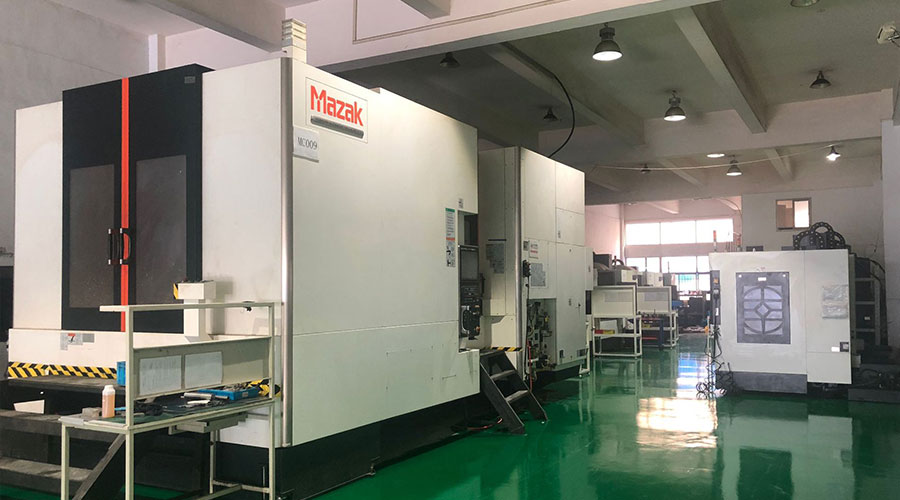 Sheet metal, beryllium, carbon steel, magnesium, 3D printing, precision CNC machining services for heavy equipment, construction, agriculture and hydraulic industries. Suitable for plastics and rare alloys machining. It can turn parts up to 15.7 inches in diameter. Processes include swiss machining,broaching, turning, milling, boring and threading. It also provides metal polishing, painting, surface grinding and shaft straightening services. The production range(include aluminum die casting and zinc die casting) is up to 50,000 pieces. Suitable for screw, coupling, bearing, pump, gearbox housing, drum dryer and rotary feed valve applications.PTJ will strategize with you to provide the most cost-effective services to help you reach your target,Welcome to Contact us ( [email protected] ) directly for your new project.
Sheet metal, beryllium, carbon steel, magnesium, 3D printing, precision CNC machining services for heavy equipment, construction, agriculture and hydraulic industries. Suitable for plastics and rare alloys machining. It can turn parts up to 15.7 inches in diameter. Processes include swiss machining,broaching, turning, milling, boring and threading. It also provides metal polishing, painting, surface grinding and shaft straightening services. The production range(include aluminum die casting and zinc die casting) is up to 50,000 pieces. Suitable for screw, coupling, bearing, pump, gearbox housing, drum dryer and rotary feed valve applications.PTJ will strategize with you to provide the most cost-effective services to help you reach your target,Welcome to Contact us ( [email protected] ) directly for your new project.
Link to this article:Heat treatment technology and application of automobile bearing materials
Reprint Statement: If there are no special instructions, all articles on this site are original. Please indicate the source for reprinting:Tungusten,Thanks!^^

